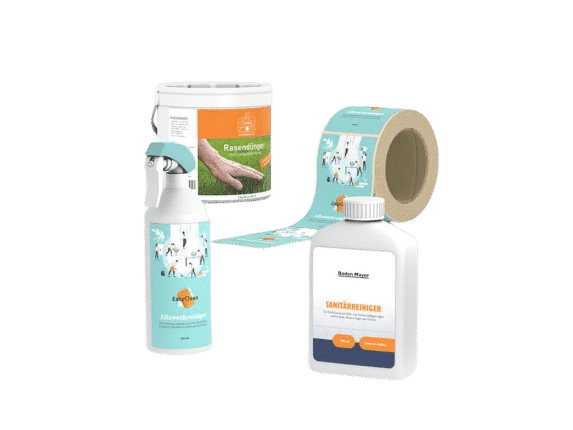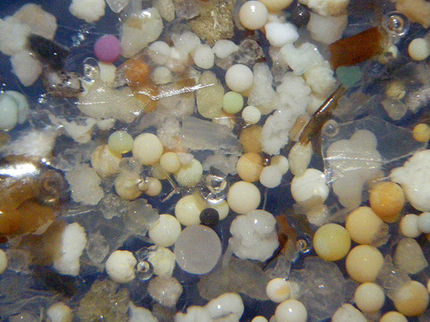Ceresana market study: plastic pipes
pipes made of plastics are becoming more popular in all sectors. They have important advantages compared to those made from other materials such as aluminum, concrete, cast iron, copper, and steel. Due to their low weight, their resistance to corrosive effects and chemicals as well as the simple handling, e.g. trenchless installation, their importance in all application areas increases.
Plastic pipes are mainly used in the areas sewage, drinking/potable water and gas supply, cable protection as well as in agriculture and industry. They will continue to notably gain importance in the future as they increasingly replace other materials and become the material of choice in a rising number of application areas. The market research institute Ceresana expects revenues generated with plastic pipes in Europe to amount to approx. €12.7 billion in 2020.
The advantage of versatility
Thanks to their propitious properties, there are virtually no segments where plastic pipes do not offer a real alternative. The degree of importance various applications areas have for individual types of pipes varies considerably. For example, pipes made of polyvinyl chloride (PVC) are relatively cheap and are thus used extensively in the sewage, potable water and cable protection sectors. While pipes based on polypropylene and polyethylene are still in the process of challenging the dominance of PVC-pipes in potable water supply, they are already playing a notable part in both gas supply and in industrial applications.
During the upcoming years, the utilization of other plastics, such as polybutylene, polyamide and acrylonitrile-butadiene-styrene, is likely to become more and more widespread. Analysts at Ceresana expect demand in Europe to increase by about 2.7% p.a. during the next eight years. Among others, these pipes are used for specialty applications such as ceiling cooling, compressed air systems, heating installations as well as the construction of automobiles and naval vessels. The utilization of composite pipes (e.g. PE-X and aluminum) offers the chance to optimize specific properties of pipes.
Substitution effects ameliorate the effects of the crisis in construction
The most important sales market for plastic pipes is Germany that accounted for 13.5% of total European consumption in 2012. Russia ranked second, followed by Turkey, France, and Italy. In the past, many Eastern European countries were able to profit from the highly dynamic development of many important sales markets for plastic pipes. Currently, however, the Construction sector in many European countries is suffering from a crisis. Plastic pipes are able to profit from substitution effects nonetheless, at the expense of other materials. For example, pipes made from metal or concrete are replaced by plastic, as this material offers superior properties and processing options. In addition, the rising price of raw materials, like steel or copper, plays an essential role in the substitution process.
Regional differences within Europe
On the relatively saturated markets in Western Europe, demand for high-quality pipes made of polyethylene and polypropylene in particular is increasing, while the demand for PVC pipes is expected to develop at only very modest rates. Growth rates recorded on the market for plastic pipes during the boom of the construction sector prior to the economic crisis will not be reached again in Western European countries. The situation, however, varies widely when examining individual Western European countries. While a rather positive development is expected for Denmark, Germany or Switzerland, a number of southern European countries such as Greece or Spain are unlikely to recover in the near future.
Eastern European demand for PVC pipes is likely to increase at rather high growth rates in comparison to Western Europe. According to analysts at Ceresana, the backlog demand in expanding the sewage and potable water supply in particular will cause demand for plastic pipes to increase at higher growth rates. Russia and Turkey especially will be important growth markets.
Organizations
Other news from the department business & finance

Get the chemical industry in your inbox
By submitting this form you agree that LUMITOS AG will send you the newsletter(s) selected above by email. Your data will not be passed on to third parties. Your data will be stored and processed in accordance with our data protection regulations. LUMITOS may contact you by email for the purpose of advertising or market and opinion surveys. You can revoke your consent at any time without giving reasons to LUMITOS AG, Ernst-Augustin-Str. 2, 12489 Berlin, Germany or by e-mail at revoke@lumitos.com with effect for the future. In addition, each email contains a link to unsubscribe from the corresponding newsletter.
Most read news
More news from our other portals
Last viewed contents

ARMATUREN-ARNDT GmbH - Troisdorf, Germany

Etiketten | Labels | labelprint24

Hellmich GmbH & Co. KG - Kirchlengern, Germany

Industrias Riolac S.A. - Oion / Oyón, Spain

Vibrowest Italiana Srl - Solaro, Italy

























































